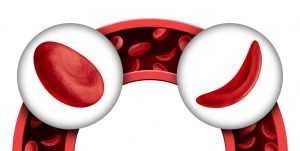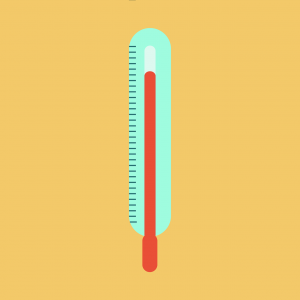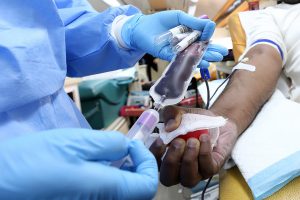Do you often feel tired? While tiredness can be a symptom of many different health conditions, if it is accompanied by other symptoms like bacterial infections, anemia, and eye problems, you might be suffering from sickle cell disease, also known as sickle cell anemia. There are four main types of sickle cell disease, each caused by different gene mutations, and knowing which one you (or your child) have will allow you to better manage the condition and avoid the complications that can develop if it is not treated properly. To better understand this condition, you should know how it develops, and what treatment options are available for managing it.
Sickle Cell Disease Defined
Sickle cell anemia is one of the most common types of inherited blood anemia, primarily affecting African Americans. Almost 100,000 Americans are diagnosed with sickle cell anemia in the United States each year, with the condition affecting 1 in 500 U.S. African American babies. It is an inherited genetic condition that affects the red blood cells, making them fragile and abnormally shaped like a crescent, or sickle, which is why the disease is named sickle cell anemia. The red blood cells’ abnormal shape makes them sticky and rigid, making them more likely to get trapped in smaller blood vessels, blocking blood from reaching various parts of the body, and causing pain and tissue damage. These sickle-shaped red blood cells are also more prone to rupture; when they do rupture, it means you will have fewer red blood cells, leading to anemia.
It is an inherited genetic condition that affects the red blood cells, making them fragile and abnormally shaped like a crescent, or sickle, which is why the disease is named sickle cell anemia. The red blood cells’ abnormal shape makes them sticky and rigid, making them more likely to get trapped in smaller blood vessels, blocking blood from reaching various parts of the body, and causing pain and tissue damage. These sickle-shaped red blood cells are also more prone to rupture; when they do rupture, it means you will have fewer red blood cells, leading to anemia.
The 4 Types Of Sickle Cell Disease
There are 4 main types of sickle cell anemia that are caused by different mutations in the hemoglobin genes. Hemoglobin is the protein in red bloods cells that help carry oxygen throughout the body; in healthy individuals, there are two hemoglobin alpha chains and 2 hemoglobin beta chains, but a mutation in the hemoglobin beta chain (which is sometimes absent) causes sickle cell anemia: The four types of this condition are:
- Hemoglobin SS Disease– This is the most common and most severe type of sickle cell disease, which occurs when a child inherits the hemoglobin S gene from both parents.
- Hemoglobin SC Disease– This is the second most common type of sickle cell disease, occurring when a child inherits the hemoglobin beta S gene from one parent and the hemoglobin C gene from the other. People with this type of sickle cell disease will have similar symptoms to individuals with hemoglobin SS disease, however symptoms are less severe.
- Hemoglobin SB 0 (Beta Zero) Thalassemia– This occurs when a child inherits the hemoglobin beta S gene from one parent and a hemoglobin beta 0 thalassemia gene mutation from the other parent.
- Hemoglobin SB+ (Beta) Thalassemia– This occurs when a child inherits the hemoglobin beta S gene from one parent and a hemoglobin Beta+ thalassemia gene from the other parent. This form of sickle cell is less severe and symptoms are usually milder.
Signs & Symptoms

Sickle cell disease is usually diagnosed at birth with a standard newborn screening, but as far as symptoms go, they usually do not show up until 4 to 6 months of age, because before this age, infants are protected by fetal hemoglobin. Signs and symptoms in infants include:
- Fever
- Abdominal pain
- Painful swelling of the hands and feet
- Pneumococcal bacterial infection
For adolescents, teens, and adults, symptoms include:
- Feeling tired or weak
- Anemia
- Swelling and inflammation of the hands and/or feet
- Lung and heart injury
- Leg ulcers
- Bacterial infections
- Eye damage
- Bone infarcts, or the death of portions of bone
Symptoms can range from mild to severe, with the environment and other conditions influencing symptoms. Sickle cell disease can become worse under certain conditions, including:
- Dehydration
- Illness
- Stress
- High altitude
- Menstruation
- Changes in temperature
- Intense exercise
Diagnosis
All newborns in the United States are screened for sickle cell disease in the hospital. Testing is normally performed on a smear of blood using a special low-oxygen preparation, also referred to as a sickle prep. The disease is then confirmed by using hemoglobin electrophoresis to determine the types of hemoglobin present.
Treatments of Sickle Cell Disease
Treatments will vary depending on the type of sickle cell disease present. Different forms of treatment include:
- Blood transfusions
- Receiving oxygen through a mask
- Rehydration through an IV to help red blood cells return to a normal state
- Pain medication when needed
- Bone marrow transplant to help treat sickle cell anemia in children younger than 16 with severe complications
- Sticking to a healthy diet, including fruits, vegetables, and whole grains
- Drinking more water
- Regular exercise
Complications of Sickle Cell Disease
Diagnosing and treating sickle cell disease is very important, because a number of complications can result from the disease, including:
- Severe anemia
- Hand-foot syndrome, which causes swelling of the hands and feet, as well as leg ulcers
- Splenic sequestration, or the sudden and painful enlargement of the spleen
- Delayed growth
- Neurological complications, such as strokes caused by brain blockages
- Eye problems
- Heart disease and acute chest syndrome (a term used to cover conditions characterized by chest pain, cough, fever, low oxygen level, and lung infiltrates)
- Lung disease
- Priapism, or a painful erection that can lead to impotence if left untreated
- Gallstones
If you get treatment for sickle cell disease, and change your lifestyle as necessary, you can remain symptom-free for many years; if sickle cell anemia is left untreated, however, many people will not live more than 40 years. To stay as healthy as possible, blood transfusions, medications, and even possibly a bone marrow transplant might be necessary; if you don’t have sufficient health insurance coverage, you could find yourself facing large medical bills. If you need a better plan, come to EZ: we’ll compare plans in your area at no cost to you, and find a plan that offers you the coverage you need at an affordable price. Our agent will provide you with all the information you need to make an informed decision on your health insurance plan. To get free instant quotes, simply enter your zip code in the bar above, or to speak to an agent, call 888-350-1890.